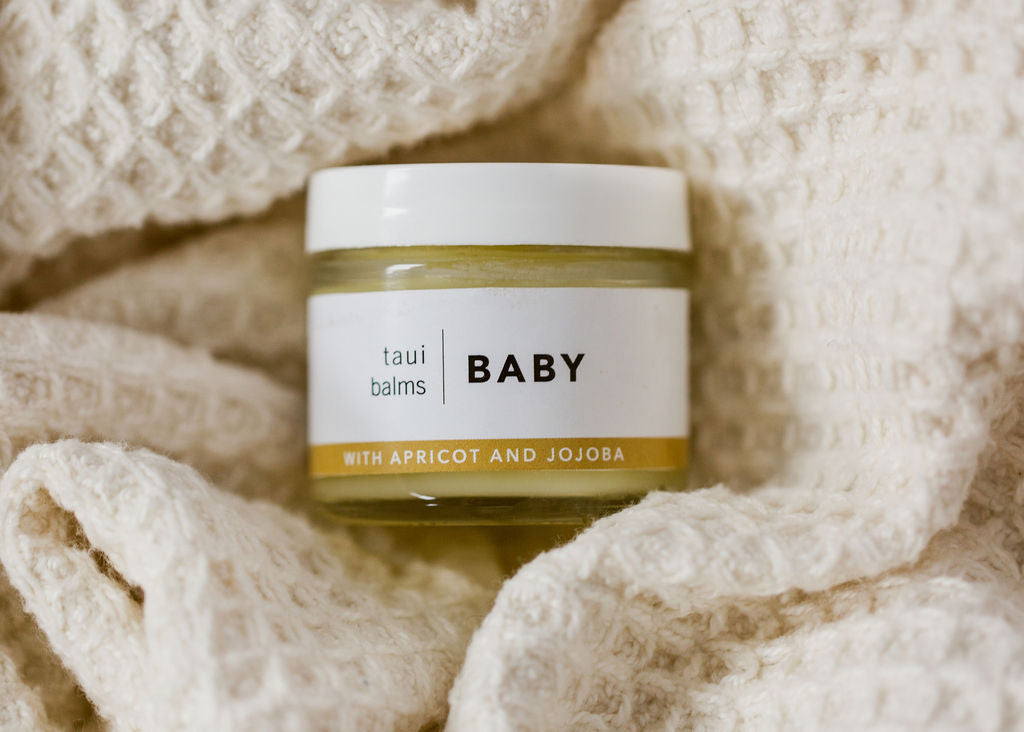She used it on diaper rash, on stretch marks, on cracked nipples, after baby bath time...basically all the time!
And while the No.1 Balm works great for babies and adults alike, we decided that we wanted to experiment with a Baby Balm for two reasons:
- We wanted a balm that didn't have honey in it. there are some concerns about honey being a possible allergen for babies. It's not clear that it would be an issue in a balm, but some parents just choose to steer clear of honey entirely.
- We wanted the Baby Balm to be as affordable as possible while still being able to source high quality ingredients.
What's so great about Jojoba Oil?
-
Jojoba oil is a humectant ingredient, which means that it creates a protective barrier by sealing with your skin. When it comes to diaper rash, this is SO important.
-
Jojoba oil is full of Vitamin E. That means it's an antioxidant that fights the effects of pollutants and other toxins.
-
Jojoba oil has anti-inflammatory properties, which is why it's often used to deal with dryness, itchy skin, rashes, flaking skin, psoriasis and eczema
What's so great about Apricot Oil?
-
Apricot oil is really versatile. It's often used as a massage oil, or as a carrier oil for essential oils. it can also be eaten and is really healthy for you!
-
Apricot oil is very light and has a fine texture, so it absorbs easily into the skin
-
Apricot oil is full of vitamin E and vitamin A, both essential nutrients for your little one
Different ways to use our Baby Balm
Like all of our balms, you can feel free to use the Baby Balm on things that aren't babies! Plenty of our customers also use it as their own moisturizer, or for their own eczema or psoriasis. But here are some common ways to start using your jar:- Diaper balm
- Cradle cap ointment
- After bath time (for mom and baby)
- Stretch marks during pregnancy and postpartum
- Cracked or bleeding nipples (yes, this is edible!)
- On little scrapes, rashes and owies
